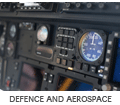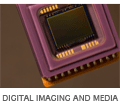Cadence PCB Design
For high speed circuit design and layout we use Cadence PCB Design 200 Series with various additions. This package includes many components, but the main parts are schematic entry, PCB layout and autorouting.
While many other consulting firms make use of the lower-cost Protel package, Bluewater Systems has selected a high-end package for all in-house hardware engineers. We believe PCB Design Studio offers a number of advantages for clients:
- Faster and more reliable design entry
- Superior autorouting capability which speeds the layout phase of projects
- A very flexible and powerful layout editor which improves productivity and reduces design time
SCHEMATIC ENTRY
Schematic entry is the process of entering the schematic design into a suitable piece of software. A schematic is a circuit diagram, showing all the components in a design and the interconnections between them. For PCB design this is a graphical tool which can produce textual HDL (Verilog or VHDL) files. (HDL stands for Hardware Description Language).
For digital IC design, more often the design is entered directly in an HDL since this makes for even higher input speed and comprehension. There is in fact a certain amount of overlap between the PCB and an FPGA on that PCB. Functionality can in principle be implemented in more discrete or gate-level ICs on the PCB, or it can be implemented in the FPGA. For the former, schematics are generally used; for the latter an HDL such as Verilog or Able is more often appropriate.
We use Cadence Allegro Design Entry HDL for schematic entry. Cadence also makes IC design tools so they are aware of the requirements of that market. Design Entry HDL therefore includes features such as breaking the design into a multi-level hierachical of blocks, where each block can be edited by a different engineer at the same time. Blocks are placed in a library and can be reused or adjusted in future designs. This can speed up schematic entry where tight time constraints exist on a large project.
During schematic entry, footprints are assigned to each part. A footprint describes the physical shape and position of the pins on a device. Most electronic components come in a variety of standard packages such as DIP (Dual Inline which is the traditional IC), BGA (Ball Grid Array which is grid of solder balls) and TQFP (Thin Quad Flat Pack which has pins on four sides). Most design is now with surface mount components, which are soldered to the surface of the PCB. The older through-hole components, which push through the PCB to be soldered on the other side, are still used in some cases, particularly for connectors.
LAYOUT AND AUTOROUTING
Layout is the process of converting the schematic into a set if tracks, holes and footprints on a PCB. Where a large number of components exist this can be very labourious.
First the components are placed into position on the board. Typically the design will place connectors in convenient locations, and ensure that components which make use of high speed buses are placed close together. An auto-placement tool can assist with this process, particularly for smaller and less critical components.
After this the tracks must be formed between components. A PCB typically consists of 4-12 layers, each of which can carry tracks. The more layers, the more dense the PCB can be made. For very simple designs with few crossing tracks and no high-speed components, a two-layer PCB may even be sufficient. Connections called 'vias' join tracks on different layers.
With 1000's of tracks on a typical board, laying each of these out correctly is extremely tedious and time-consuming. An autorouter is typically employed to help with this process. Unfortunately, many autorouters do not perform this task anywhere near as well as a skilled engineer. This means that more layers or vias are required for an autorouted design that for a hard-made design.
Even for a good autorouter, it must be set up correctly for the results to be useful. And even then it will require some manual tweaking to obtain the best results.
The autorouter is a major reason why Bluewater Systems has selected Cadence PCB design tools. Cadence's autorouter, once correctly set up, can quickly produce a layout which needs only minor modifications and tweaks. This can save many weeks of painful manual layout. When schematic or components changes need to be made, these can be performed without yet more days and weeks of manual rework of the layout.




